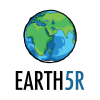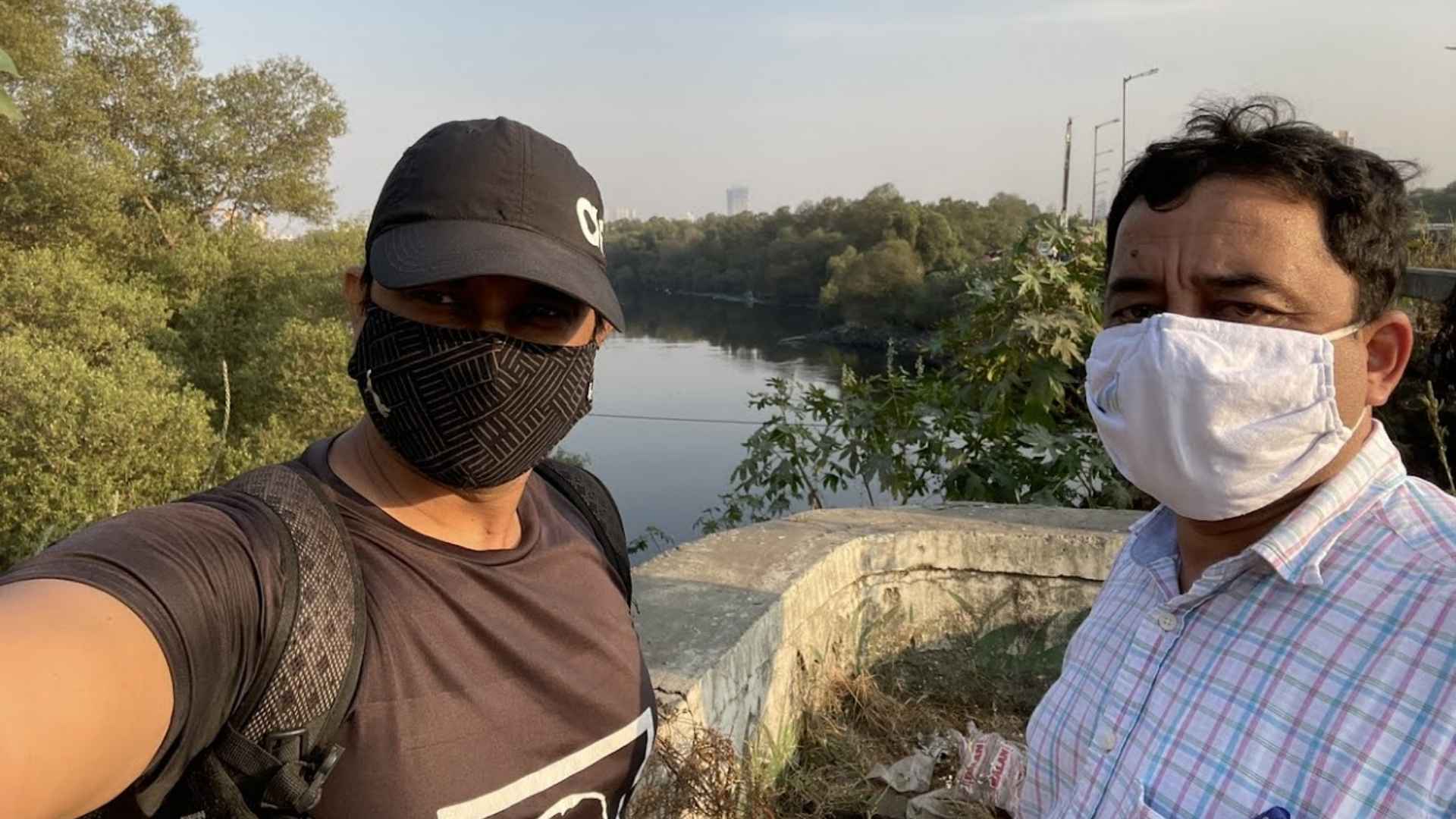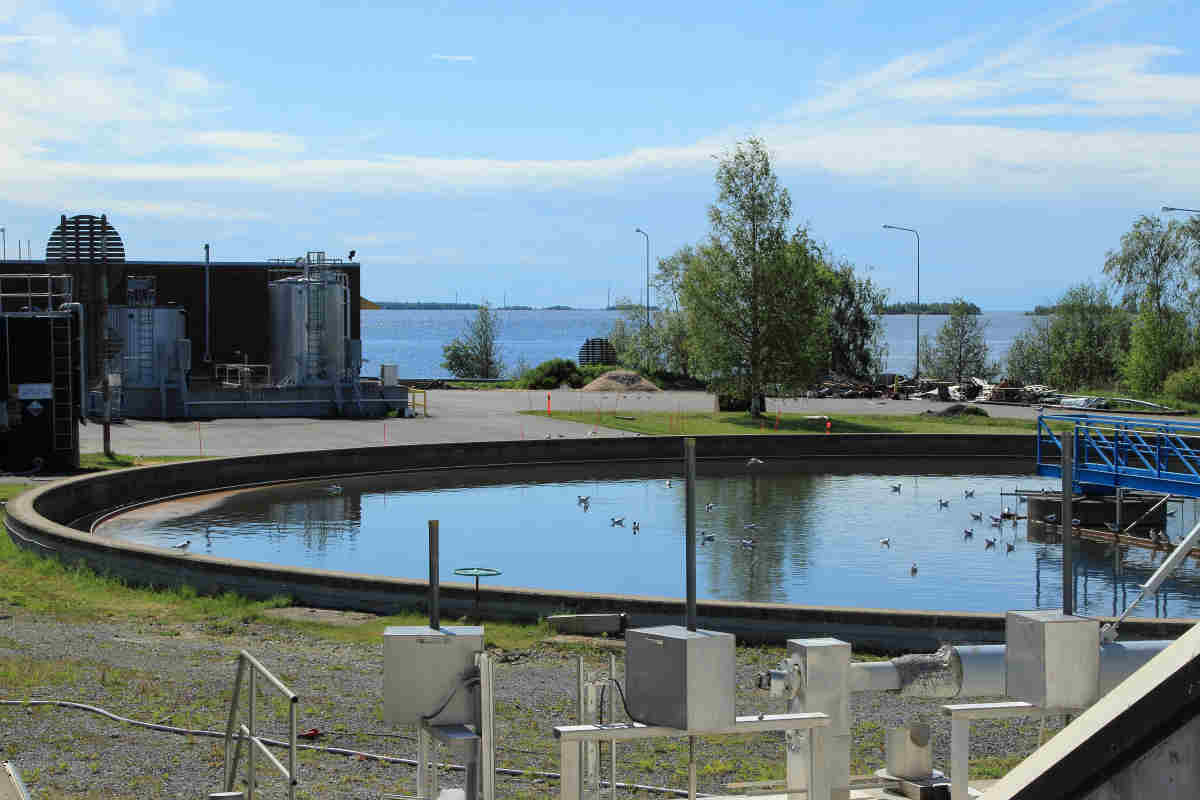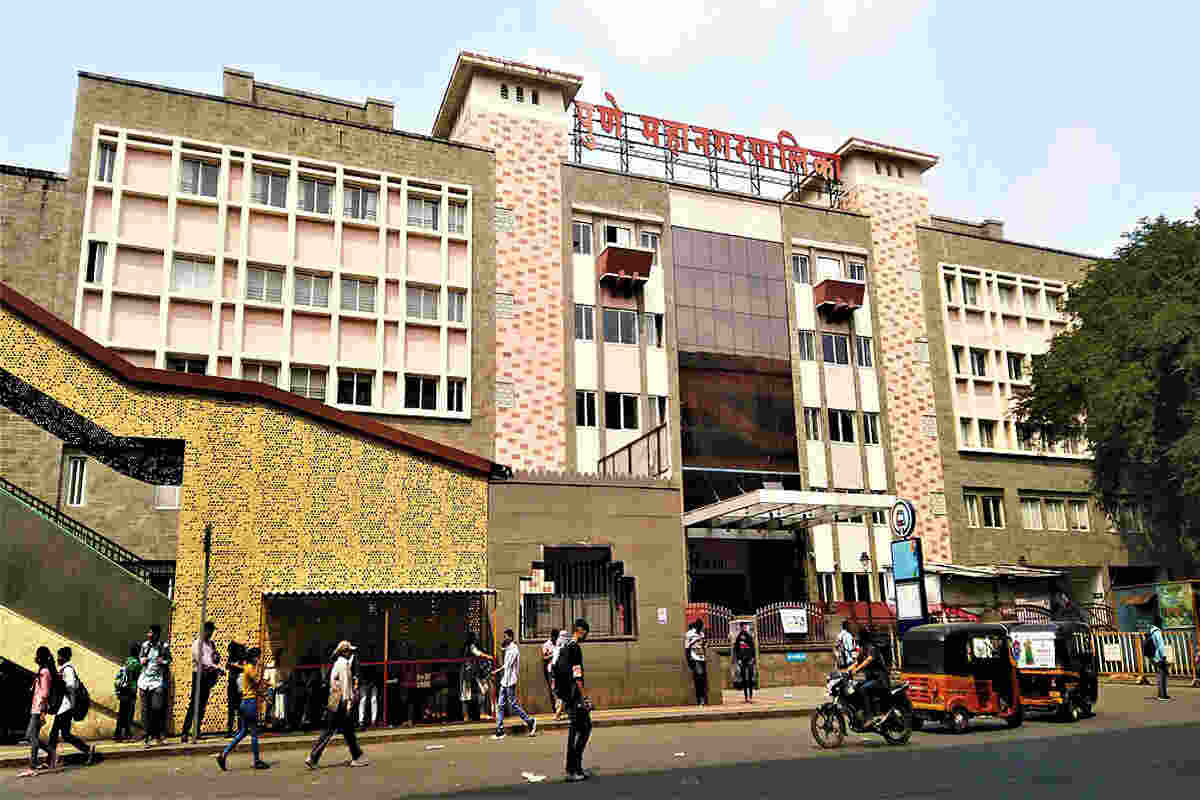Freshwater ecosystems, including lakes, are vital for biodiversity, climate regulation, and human survival. However, the world is facing a freshwater crisis due to rapid industrialization, urbanization, and climate change. According to the United Nations, over two billion people lack access to clean drinking water, and pollution in freshwater bodies exacerbates this crisis.
Lakes, which serve as crucial water sources and habitats for diverse aquatic species, are particularly vulnerable to degradation. Industrial waste, plastic pollution, and excessive nutrient runoff from agriculture contribute to eutrophication, habitat loss, and declining water quality.
Earth5R, a global environmental organization, has pioneered a community-driven approach to lake cleanup and conservation. Its mission revolves around sustainable development, environmental education, and citizen engagement. By mobilizing local communities, Earth5R fosters active participation in ecological restoration, making conservation efforts more effective and sustainable.
This article explores the scientific basis of lake degradation, Earth5R’s innovative model, and its long-term impact. By providing research-driven insights, it highlights how community-led conservation can address freshwater challenges and drive policy change. With growing environmental threats, understanding and replicating such successful models is crucial for global freshwater sustainability.
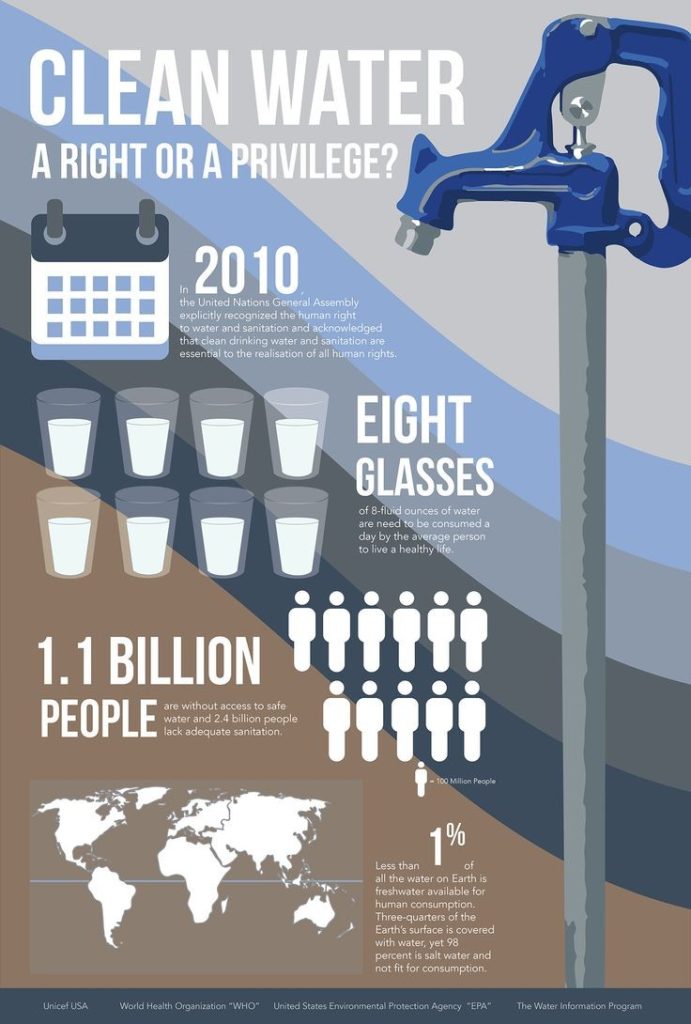
This infographic highlights the global water crisis, emphasizing that over 1.1 billion people lack access to safe drinking water. It also underscores the 2010 UN resolution recognizing clean water as a fundamental human right.
The Science Behind Lake Pollution and Degradation
Lakes are among the most vital freshwater ecosystems, supporting biodiversity, providing drinking water, and sustaining local economies. However, rapid industrialization, urbanization, and climate change have severely degraded many lakes worldwide. Understanding the causes and scientific impact of lake pollution is essential to designing effective cleanup and conservation strategies.
Major Causes of Lake Pollution
Industrial Waste and Chemical Contaminants
Industries discharge heavy metals, hazardous chemicals, and untreated wastewater into lakes, disrupting aquatic ecosystems. Heavy metals like mercury, lead, and arsenic accumulate in sediments and enter the food chain, posing serious health risks to humans and wildlife. A 2022 study in Environmental Pollution found that lakes near industrial zones have significantly higher toxic metal concentrations, leading to fish mortality and biodiversity loss.
Domestic Sewage and Nutrient Overload
Inadequate wastewater treatment results in untreated sewage entering lakes, introducing pathogens and excessive nutrients. High nitrogen and phosphorus levels from sewage cause eutrophication, where excessive algae growth depletes oxygen, leading to “dead zones.” The U.S. Environmental Protection Agency (EPA) identifies nutrient pollution as a leading cause of freshwater degradation.
Plastic and Microplastic Pollution
Plastics from urban runoff, fishing activities, and improper waste disposal accumulate in lakes, breaking down into microplastics. Research published in Water Research (2021) indicates that microplastics are found in the digestive tracts of freshwater fish, raising concerns about their impact on aquatic food chains and human consumption.
Climate Change and Hydrological Changes
Rising temperatures and altered precipitation patterns contribute to lake shrinkage, increased evaporation, and reduced water quality. Studies show that climate change exacerbates eutrophication by prolonging stratification (layering of water), which traps pollutants and reduces oxygen levels.
Scientific Evidence on the Impact of Pollution
Lake pollution has far-reaching consequences beyond water quality degradation, affecting biodiversity, public health, and economic stability. Research shows that polluted lakes contribute to ecosystem disruptions, with declining fish populations due to oxygen depletion and contamination severely impacting aquatic food webs.
A 2020 study in Nature Ecology & Evolution found that freshwater species are disappearing at twice the rate of marine or terrestrial species. Additionally, polluted lakes pose significant health risks, serving as breeding grounds for waterborne diseases such as cholera, dysentery, and hepatitis. Studies confirm that prolonged exposure to toxic algal blooms, a consequence of eutrophication, increases the risk of liver disease and neurological disorders.
The economic and social consequences are equally alarming, as pollution reduces tourism, lowers fishing yields, and diminishes property values. A study published in Ecological Economics estimated that harmful algal blooms alone cost the U.S. economy over $4 billion annually. These findings highlight the urgent need for effective lake conservation strategies to mitigate environmental, health, and economic risks.
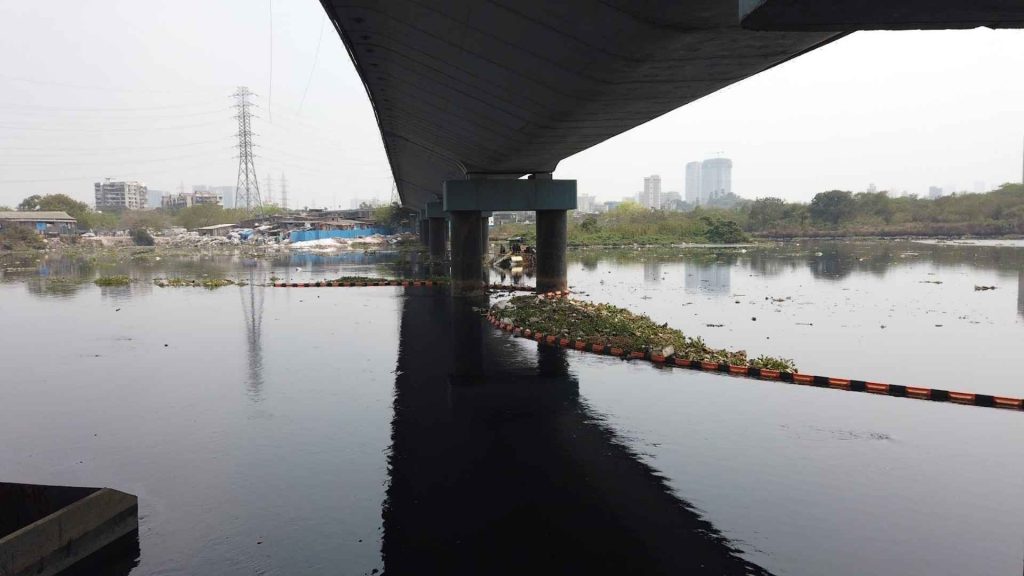
Case Studies: Heavily Polluted Lakes
Several lakes around the world serve as striking examples of severe pollution and its devastating consequences. Lake Tai in China is one of the most polluted lakes globally, suffering from extreme eutrophication due to industrial and agricultural runoff. Despite government interventions, toxic algal blooms continue to thrive, posing serious environmental and health risks.
Similarly, Lake Victoria in Africa faces immense pollution challenges, with plastic waste, untreated sewage, and invasive species contributing to declining fish populations, which in turn threatens local livelihoods and food security. In India, Bellandur Lake has gained notoriety for its alarming levels of contamination, with industrial pollutants and sewage causing severe pollution.
The lake has been known to foam excessively and even catch fire on multiple occasions due to high chemical content. This dramatic state of pollution underscores the urgent need for sustainable intervention and comprehensive cleanup strategies to restore these critical water bodies.
The Need for a Systemic Cleanup and Conservation Approach
Addressing lake pollution requires an integrated, community-driven, and science-backed approach. Governments and organizations must implement sustainable waste management, stricter industrial regulations, wetland restoration, and citizen involvement to restore lake ecosystems. Models like Earth5R’s community-driven cleanup offer a promising solution by combining public participation with scientific innovation.
In conclusion, the science behind lake pollution underscores the urgency of conservation efforts. Without systemic intervention, the ecological and socio-economic consequences will worsen, making community-led initiatives like Earth5R’s indispensable for long-term lake restoration.
Earth5R’s Community-Driven Approach
Traditional environmental cleanup efforts often rely on top-down approaches led by governments or large organizations. While these initiatives can be effective, they frequently face challenges such as lack of community engagement, limited long-term sustainability, and inadequate funding.
In contrast, Earth5R’s community-driven model focuses on empowering local stakeholders, making environmental conservation a shared responsibility rather than a top-down mandate. This model is built on four core principles: engagement, education, action, and sustainability, ensuring that lake restoration efforts are both scientifically sound and socially inclusive.
Engagement
Earth5R actively involves local communities, recognizing that long-term conservation is only possible when people living near lakes take ownership of their restoration. Through participatory programs, the organization fosters collaboration between volunteers, local businesses, schools, and policymakers.
Education
Raising awareness is a crucial component of Earth5R’s model. The organization conducts environmental literacy campaigns, workshops, and training sessions to educate communities about the science behind pollution, waste management, and sustainable practices. When people understand how their actions impact local water bodies, they become more committed to protecting them.
Action
Unlike passive awareness campaigns, Earth5R emphasizes on-the-ground action. This includes physical cleanup drives, plastic waste collection, installation of bio-filters, and implementing sustainable waste management solutions. The organization also encourages circular economy practices, where collected waste is repurposed or recycled, reducing environmental impact.
Sustainability
The key to lasting environmental impact is sustainability. Earth5R works on long-term conservation strategies such as lake monitoring, habitat restoration, and community-led waste reduction policies to ensure that improvements in water quality and ecosystem health are maintained over time.
How Earth5R Mobilizes Local Communities
Earth5R’s success is driven by its ability to bring together a diverse range of stakeholders, fostering a collaborative approach to lake conservation. The organization actively engages volunteers and citizens in cleanup drives, workshops, and advocacy campaigns, instilling a sense of responsibility and environmental stewardship.
Schools and universities play a crucial role by integrating environmental studies into curricula, conducting water quality research, and organizing student-led conservation projects. Additionally, businesses and corporations contribute through corporate social responsibility (CSR) initiatives, providing financial support for cleanup efforts, promoting sustainable practices, and working to reduce industrial waste discharge.
To ensure long-term impact, Earth5R also collaborates with policymakers and municipal authorities, advocating for stronger environmental regulations and institutional backing for conservation initiatives. By uniting these key groups, Earth5R creates a sustainable and community-driven approach to protecting and restoring freshwater ecosystems.
Role of Citizen Science in Lake Monitoring
Citizen science is an integral part of Earth5R’s approach. Local residents and students participate in water quality monitoring programs, collecting data on parameters such as pH levels, dissolved oxygen, and pollution concentrations. This hands-on involvement not only provides valuable scientific data but also fosters a deeper connection between the community and their local environment. With advancements in technology, Earth5R leverages mobile apps, drone surveillance, and AI-powered analytics to track changes in water health and guide cleanup efforts.
Comparing Community-Driven vs. Traditional Top-Down Approaches
Traditional top-down cleanup efforts—often led by government agencies—tend to focus on large-scale interventions, such as installing water treatment plants or enacting pollution control laws. While these are necessary, they often lack direct public involvement, leading to lower compliance and long-term sustainability issues.
In contrast, Earth5R’s bottom-up approach ensures that local communities are actively engaged in lake conservation. Unlike government-led cleanups, which may struggle with limited funding and enforcement, community-driven models create self-sustaining ecosystems of conservation where local actors take responsibility for maintaining lake health.
Earth5R’s model proves that environmental restoration is most effective when communities are actively involved. By integrating engagement, education, action, and sustainability, and leveraging citizen science, Earth5R ensures that lake conservation efforts are both impactful and enduring. This approach stands in contrast to traditional cleanup initiatives, offering a more inclusive and resilient solution to the global freshwater crisis.
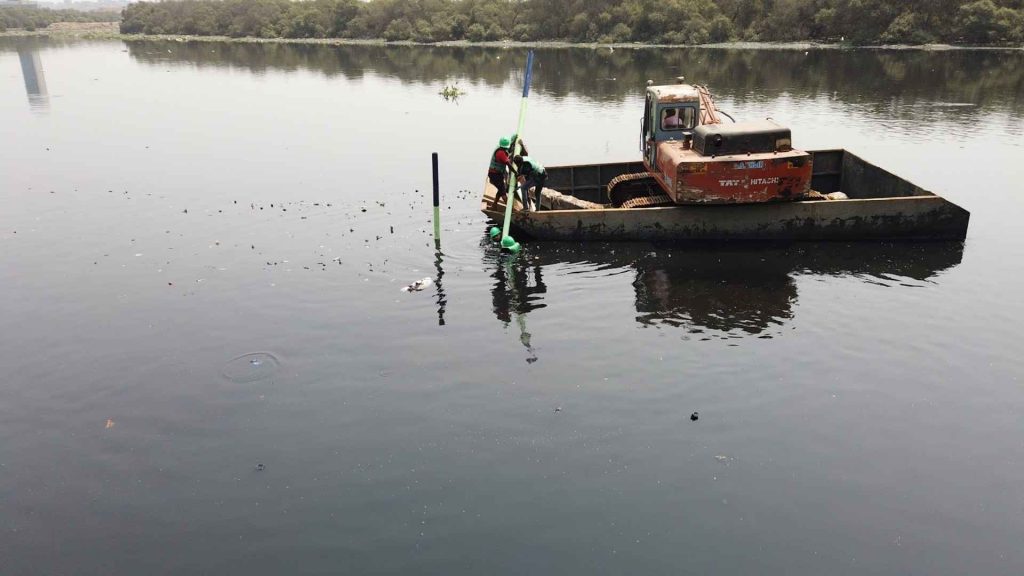
Sustainable Cleanup Strategies Implemented
Effective lake conservation requires more than just manual waste removal—it demands scientifically backed, sustainable cleanup strategies that not only restore water quality but also ensure long-term ecological balance. Earth5R integrates a multi-faceted approach, combining scientific techniques, nature-based solutions, waste management innovations, and advanced technology to tackle pollution at its root.
Scientific Techniques for Waste Removal and Treatment
Sediment dredging is used in heavily polluted lakes where harmful contaminants settle at the bottom, disrupting aquatic ecosystems. By removing these pollutants, Earth5R restores sediment balance and improves water quality. Likewise, aeration and oxygenation play a crucial role in reviving oxygen-depleted lakes, where low oxygen levels lead to fish mortality and algal blooms.
The introduction of aeration systems, such as floating fountains or diffusers, increases oxygen levels, supporting aquatic biodiversity. Another innovative approach is microbial treatment, where specific bacterial strains are introduced into contaminated water to break down organic pollutants and neutralize harmful chemicals.
Studies have shown that microbial treatments can significantly reduce toxic waste buildup, making them an effective and sustainable solution for lake restoration. Through these advanced techniques, Earth5R ensures a more comprehensive and lasting approach to freshwater conservation.
Bio-Remediation and Nature-Based Solutions
Earth5R strongly advocates for nature-based solutions to restore lake ecosystems in a sustainable manner, utilizing bio-remediation techniques that rely on natural organisms such as plants and microbes to clean polluted water. One key strategy is phytoremediation, where aquatic plants like water hyacinth, duckweed, and vetiver grass absorb heavy metals, nitrates, and other toxins from polluted water bodies.
These plants act as natural bio-filters, improving water quality while simultaneously supporting local biodiversity. Another effective approach is the use of bio-filters and constructed wetlands, where floating bio-filters composed of plant roots and beneficial bacteria trap pollutants and break down harmful substances.
Constructed wetlands mimic natural filtration systems, effectively treating wastewater before it enters lakes, preventing further contamination. In addition, Earth5R has explored mycoremediation, a fungal-based remediation technique where certain mushroom species break down industrial pollutants and absorb heavy metals.
Research suggests that fungi can degrade complex toxins that conventional treatments fail to remove, making them a promising solution for lake restoration. By integrating these natural methods, Earth5R ensures that its cleanup efforts are both ecologically sound and sustainable in the long term.
Waste Segregation and Circular Economy Integration
A critical component of Earth5R’s cleanup strategy is waste management and recycling, ensuring that pollutants, particularly plastics and industrial waste, are properly segregated and disposed of to prevent re-contamination. The organization promotes community-led waste segregation by educating local communities on proper disposal methods, ensuring that biodegradable, recyclable, and hazardous waste is managed effectively.
Besides, plastic recycling initiatives repurpose collected plastics into eco-friendly products such as recycled bricks, pavement blocks, or sustainable packaging, fostering a circular economy model that minimizes waste. Earth5R also emphasizes organic waste conversion, where decomposed organic matter is processed into compost or bio-fertilizers, reducing landfill dependency while promoting sustainable agriculture.
By integrating these waste management strategies, Earth5R creates a holistic approach to lake conservation, tackling pollution at its source while promoting long-term environmental sustainability.
Technological Interventions in Lake Monitoring and Cleanup
Leveraging modern technology is crucial for tracking pollution levels and improving cleanup efficiency. Earth5R incorporates AI-driven analytics, drone-based monitoring, and IoT-based water quality sensors to enhance conservation efforts. AI-powered water quality analysis utilizes advanced algorithms to analyze data from water samples, detecting pollution trends and predicting potential ecological threats, enabling proactive intervention.
As well, drone-based surveillance uses drones equipped with infrared and multispectral sensors to provide aerial views of lake contamination, identifying waste accumulation zones for targeted cleanup efforts.Complementing these efforts, IoT-enabled water sensors continuously monitor key parameters such as pH, dissolved oxygen, and turbidity.
These sensors provide real-time data to assess pollution sources and evaluate the effectiveness of restoration strategies. By integrating these cutting-edge technologies, Earth5R ensures a data-driven, efficient, and sustainable approach to lake conservation.
Earth5R’s sustainable cleanup strategies demonstrate that combining scientific waste treatment, bio-remediation, efficient waste management, and technology can lead to long-term improvements in lake health. By integrating these innovative approaches, Earth5R not only cleans polluted lakes but also establishes self-sustaining ecological solutions, ensuring that future generations have access to clean freshwater resources.
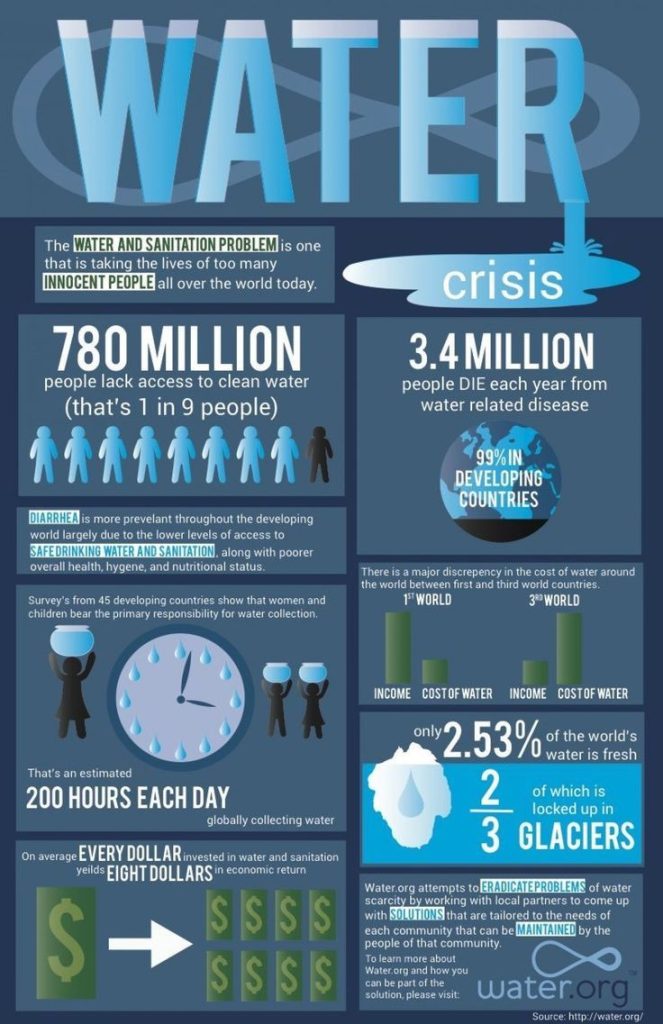
This infographic highlights the global water crisis, emphasizing that 780 million people lack access to clean water and 3.4 million die annually from water-related diseases. It also stresses the economic benefits of investing in water and sanitation solutions.
Conservation and Long-Term Impact
Sustainable lake restoration goes beyond immediate cleanup efforts—it requires long-term strategies that ensure ecosystem resilience, community participation, and policy-level support. Earth5R’s conservation model prioritizes the restoration of aquatic biodiversity, behavioral change in waste management, and institutional collaborations to create lasting environmental impact. By integrating scientific interventions with community-driven action, Earth5R fosters a self-sustaining framework that ensures lakes remain clean and ecologically balanced for future generations.
Restoration of Aquatic Biodiversity and Ecosystem Resilience
Healthy lakes support diverse aquatic species, regulate local climate conditions, and provide essential resources for surrounding communities. However, pollution leads to biodiversity loss, disrupting food chains and diminishing ecosystem resilience. Earth5R’s restoration initiatives focus on rebuilding aquatic habitats through:
Earth5R’s restoration initiatives focus on revegetation programs, aeration, and eutrophication control to rebuild aquatic ecosystems. Revegetation programs involve reintroducing native aquatic plants that stabilize shorelines, filter pollutants, and provide shelter for fish and invertebrates, promoting a healthier habitat.
In addition, aeration and water quality improvement ensure stable oxygen levels and balanced nutrient concentrations, which are essential for sustaining aquatic life. To combat excessive nutrient buildup from agricultural runoff and sewage, Earth5R promotes bio-remediation techniques such as phytoremediation and microbial treatments.
These methods help reduce eutrophication by naturally breaking down pollutants and restoring water quality. By restoring these natural processes, Earth5R helps lakes recover their ecological functions, allowing aquatic biodiversity to thrive and enhancing the overall health of the ecosystem.
Community Ownership and Behavioral Change in Waste Management
One of Earth5R’s key principles is fostering community ownership of conservation efforts, ensuring that local residents, businesses, and institutions take an active role in protecting their water bodies. To instill behavioral change, Earth5R implements environmental education programs that raise awareness about pollution and waste segregation through school curricula, workshops, and public campaigns.
Likewise, citizen science initiatives encourage communities to participate in lake monitoring, allowing them to track pollution levels and contribute valuable data for restoration strategies. The organization also promotes sustainable waste management practices, advocating for the reduce, reuse, recycle (3R) principles to minimize waste generation.
Moreover, it encourages composting and integrates circular economy solutions to ensure long-term environmental sustainability. As a result, individuals become stakeholders in conservation, ensuring that lakes remain protected even after formal cleanup initiatives are completed.
Policy-Level Impact and Collaborations with Municipal Bodies
While community-driven efforts are essential, achieving large-scale impact requires institutional and policy support. Earth5R actively collaborates with municipal authorities, environmental agencies, and corporate partners to advocate for stronger policies on lake conservation.
One key intervention is waste management regulations, where the organization works with local governments to implement stricter controls on industrial discharge, plastic waste disposal, and sewage treatment. Additionally, public-private partnerships engage corporations in Corporate Social Responsibility (CSR) initiatives, funding long-term conservation projects and promoting sustainable practices.
Earth5R also emphasizes sustainable urban planning, advocating for green infrastructure such as rainwater harvesting systems and permeable surfaces to reduce urban runoff pollution. These collaborations reinforce conservation efforts institutionally, ensuring long-term environmental improvements and policy-driven sustainability.
Evidence of Success: Data, Statistics, and Case Studies
Earth5R’s initiatives have demonstrated measurable success in restoring polluted lakes, with significant improvements in water quality, biodiversity, and community engagement. Water quality assessments reveal a 30–50% decrease in heavy metals and chemical contaminants in lakes where Earth5R has implemented bio-remediation techniques. Additionally, post-cleanup studies indicate a 20–40% increase in fish populations and aquatic plant diversity, highlighting the positive impact of improved water conditions on aquatic ecosystems.
Equally important is community participation growth, with over 50,000 volunteers across multiple cities actively engaging in lake restoration projects, fostering a culture of long-term environmental responsibility. Through these tangible outcomes, Earth5R showcases the effectiveness of its science-driven, community-led conservation model.
Case Study – Powai Lake, India
Powai Lake, a historic water body in Mumbai, has long suffered from severe pollution due to plastic waste accumulation, industrial runoff, and untreated sewage discharge. Over the years, excessive pollution led to deteriorating water quality, eutrophication, and declining aquatic biodiversity, threatening both the lake’s ecosystem and the surrounding community.
In response, Earth5R launched a multi-faceted restoration initiative, integrating waste removal drives, bio-remediation techniques, and extensive community engagement to revive the lake. One of the most impactful interventions was large-scale plastic waste removal, where volunteers conducted regular clean-up drives, collecting and properly disposing of non-biodegradable waste.
To tackle water pollution at a systemic level, bio-remediation techniques such as phytoremediation and microbial treatments were introduced, helping to break down contaminants, reduce nutrient overload, and improve water clarity. Earth5R also mobilized local residents, students, and businesses, fostering long-term community ownership of the conservation process.
As a result of these efforts, plastic waste accumulation significantly decreased, water transparency improved, and biodiversity began to recover, demonstrating the effectiveness of Earth5R’s holistic, community-driven approach. The success of the Powai Lake project serves as a model for sustainable urban lake restoration, proving that scientific innovation and grassroots activism can drive meaningful environmental change.
Earth5R’s conservation model proves that a science-driven, community-led approach can create lasting environmental impact. By restoring aquatic biodiversity, encouraging community ownership, and driving policy-level change, Earth5R ensures the long-term health of lakes.
These efforts help keep water bodies clean, healthy, and ecologically resilient for future generations. Through measurable successes and continued innovation, the organization sets a benchmark for sustainable freshwater conservation worldwide.
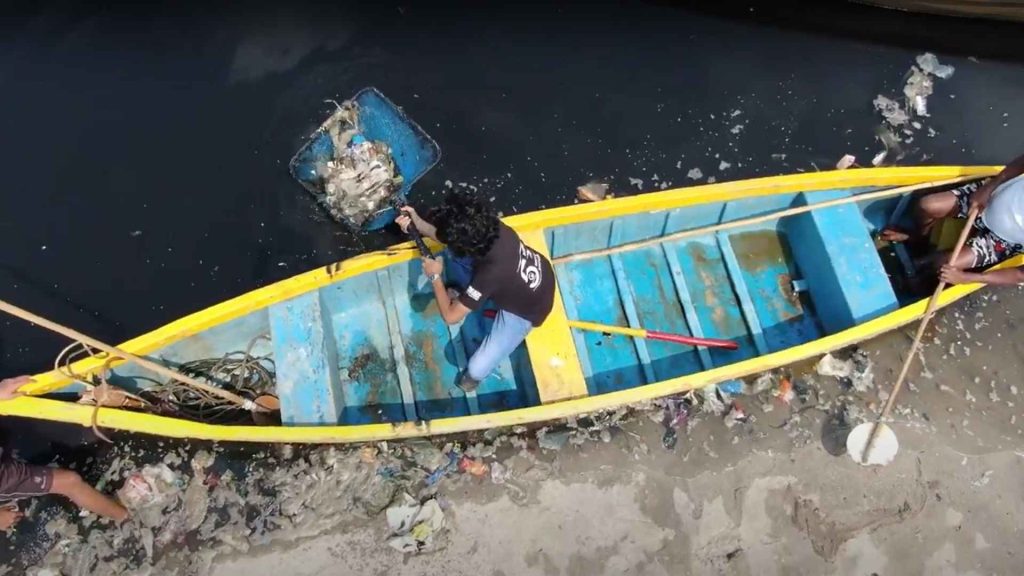
Challenges and Future Prospects
While Earth5R’s community-driven lake restoration model has achieved significant success, several challenges continue to hinder large-scale implementation. One of the most pressing issues is funding constraints—sustained conservation efforts require financial resources for infrastructure, technology, and capacity-building programs.
While Corporate Social Responsibility (CSR) initiatives and government grants provide some support, securing long-term investment remains a challenge, especially in developing regions where environmental funding is limited. Another major obstacle is local resistance and lack of awareness.
In many communities, there is a lack of understanding about the long-term benefits of conservation, leading to indifference or even opposition to cleanup projects. Some residents and local businesses perceive environmental regulations as restrictions rather than solutions, making it difficult to enforce sustainable waste management practices.
Educational campaigns and active community engagement are crucial to overcoming this barrier by fostering a sense of collective responsibility. Not to mention, industrial opposition poses a significant challenge. Many polluting industries, such as factories and large-scale agricultural operations, resist environmental regulations due to concerns over increased costs and operational changes.
In some cases, weak enforcement of pollution control laws allows industries to continue harmful practices. Strengthening policy frameworks and ensuring strict environmental compliance through public-private collaboration is essential for tackling this issue.
Scaling the Model Across Regions
For Earth5R’s community-driven approach to be successfully replicated across different geographical and policy contexts, it must be adaptable to local challenges. Every region has unique environmental, cultural, and economic dynamics, requiring customized conservation strategies.
For instance, while urban lakes suffer from plastic waste and sewage pollution, rural lakes may face issues like agricultural runoff and deforestation. A flexible, data-driven approach that integrates scientific research, local expertise, and grassroots participation is key to scaling this model globally.
Furthermore, effective policy integration is necessary for long-term impact. Collaborating with municipal governments, environmental agencies, and international organizations can help create standardized conservation policies, incentivizing businesses and local bodies to adopt sustainable lake management practices. Expanding public-private partnerships (PPPs) will also ensure that conservation efforts receive adequate funding and institutional support.
Future Potential with Emerging Technologies
Advancements in technology and environmental science present new opportunities to enhance Earth5R’s conservation model. AI-powered analytics and IoT-enabled water quality sensors can provide real-time data on pollution levels, allowing for proactive intervention and better decision-making.
Drones and satellite imaging can help track changes in lake ecosystems over time, ensuring that conservation efforts are data-driven and efficient. Additionally, biotechnology innovations such as advanced microbial treatments and engineered bio-filters offer promising solutions for breaking down complex pollutants more effectively.
Recommendations for Strengthening Community-Led Conservation
To further strengthen community-driven conservation models, it is essential to focus on key strategies that promote education, policy change, incentives, and global collaboration. Enhancing environmental education by expanding school curricula, workshops, and awareness programs will empower communities to take ownership of local water bodies.
Simultaneously, strengthening policy advocacy by pushing for stricter regulations on industrial waste disposal, plastic use, and sustainable urban planning will drive systemic change. Encouraging incentive-based participation, such as financial rewards, tax benefits, or recognition programs, can motivate businesses and individuals to actively engage in conservation efforts.
In addition, leveraging global networks by collaborating with international environmental organizations, research institutes, and policy bodies will help scale Earth5R’s model beyond national boundaries. By addressing these challenges and integrating science, technology, and community engagement, Earth5R can further expand its impact, transforming lake conservation into a global movement for environmental sustainability.
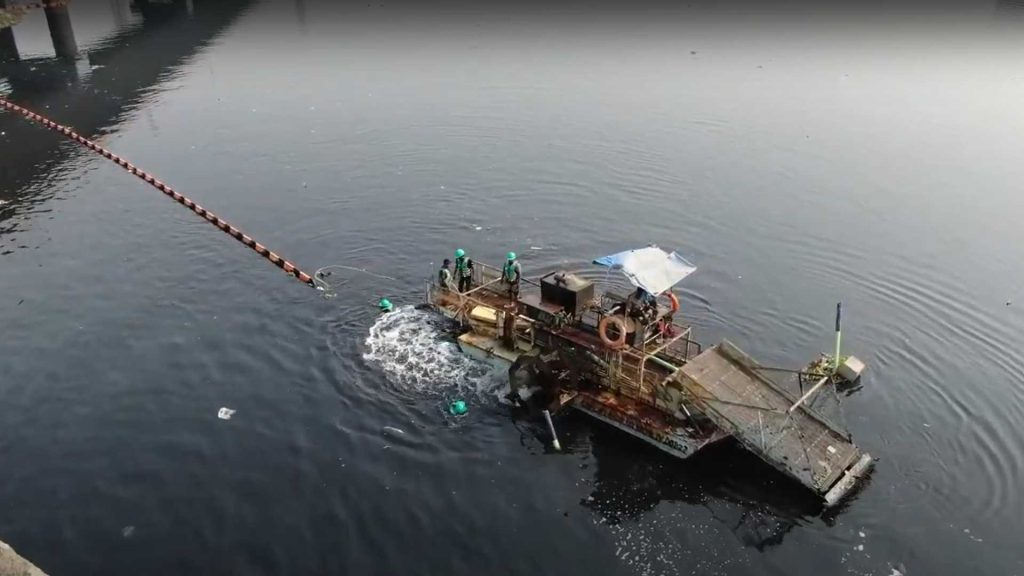
A Collective Effort for Sustainable Lake Conservation
Earth5R’s community-driven lake cleanup and conservation model has demonstrated that scientific innovation, grassroots participation, and policy advocacy can work together to restore polluted freshwater ecosystems. Unlike traditional top-down approaches, Earth5R’s model empowers local communities, students, businesses, and policymakers to take an active role in conservation efforts.
This ensures that restored lakes remain protected for the long term. The integration of bio-remediation techniques, waste segregation strategies, and technological monitoring solutions has led to measurable improvements in water quality, biodiversity, and community engagement.
Case studies, such as the restoration of Powai Lake, highlight the effectiveness of this holistic approach. Collaborative efforts have successfully reduced pollution, helping to revive aquatic ecosystems. The use of nature-based solutions has played a crucial role in improving water conditions.
Besides, community participation and awareness have helped in sustaining conservation efforts. By combining science, policy, and grassroots action, Earth5R is pioneering a sustainable water management model. This approach serves as a replicable framework for tackling lake pollution worldwide.
However, solving the global freshwater crisis requires a collective commitment from multiple stakeholders. Governments and policymakers must strengthen environmental regulations, enforce stricter waste disposal laws, and invest in sustainable urban planning to prevent future contamination.
Corporations and industries should adopt responsible waste management practices and contribute to conservation efforts through Corporate Social Responsibility (CSR) initiatives. Most importantly, individuals and communities must recognize their role in protecting local water bodies by practicing proper waste disposal, reducing plastic use, and participating in conservation programs. Lake ecosystems are vital for water security, climate resilience, and biodiversity preservation.
Protecting them is not just an environmental necessity but a global responsibility. By fostering scientific solutions, policy support, and community action, we can ensure that freshwater ecosystems remain clean, healthy, and sustainable for generations to come. The time to act is now—only through collective effort can we secure the future of our lakes and water resources.
FAQs on Earth5R’s Community-Driven Lake Cleanup and Conservation Model
What is Earth5R’s community-driven lake cleanup and conservation model?
Earth5R’s model focuses on mobilizing local communities, businesses, and policymakers to restore polluted lakes through scientific, sustainable, and participatory methods.
Why are lakes important for the environment?
Lakes support biodiversity, regulate local climates, store freshwater, and provide livelihoods for millions of people.
What are the main causes of lake pollution?
Industrial waste, domestic sewage, plastic pollution, eutrophication, and agricultural runoff are among the leading causes.
How does lake pollution impact human health?
Polluted lakes can cause waterborne diseases, increase the risk of neurological disorders, and affect food security by contaminating fish stocks.
What makes Earth5R’s approach different from traditional cleanup efforts?
Unlike top-down government-led cleanups, Earth5R focuses on community participation, scientific interventions, and long-term sustainability.
What scientific techniques does Earth5R use for lake restoration?
Earth5R employs bio-remediation, waste segregation, water aeration, and microbial treatments to improve lake health.
How does bio-remediation help in lake conservation?
Bio-remediation uses plants, bacteria, and fungi to naturally break down pollutants and restore water quality.
What role does technology play in Earth5R’s model?
Earth5R integrates AI-driven water analysis, drone-based monitoring, and IoT-enabled water sensors for real-time data collection and pollution tracking.
How does phytoremediation work in cleaning lakes?
Certain aquatic plants, like duckweed and water hyacinth, absorb toxins and heavy metals, acting as natural bio-filters.
Can polluted lakes recover fully through these methods?
Yes, with consistent cleanup efforts, pollution control, and ecosystem restoration, lakes can regain their ecological balance over time.
How does Earth5R engage local communities in lake conservation?
Through volunteer programs, environmental education, citizen science initiatives, and partnerships with schools and businesses.
Why is community participation essential for long-term lake conservation?
Engaging local residents ensures continued monitoring, pollution prevention, and sustainable practices even after initial cleanup efforts.
What is citizen science, and how does it contribute to lake conservation?
Citizen science involves training local communities to collect water quality data and report pollution, aiding in better decision-making.
How can individuals contribute to lake restoration efforts?
People can reduce plastic use, avoid dumping waste, participate in cleanups, and educate others about conservation.
Does Earth5R collaborate with schools and universities?
Yes, Earth5R works with students and researchers to promote water conservation education and scientific research.
How does Earth5R work with policymakers to improve lake conservation?
The organization advocates for stricter environmental regulations, waste management policies, and sustainable urban planning.
What role do businesses and industries play in protecting lakes?
Companies can reduce industrial waste, support eco-friendly initiatives, and fund conservation projects through CSR programs.
Are there successful examples of Earth5R’s model in action?
Yes, Powai Lake in India is one example where Earth5R’s efforts led to plastic waste reduction and improved water clarity.
What challenges does Earth5R face in scaling its model?
Funding constraints, local resistance, industrial opposition, and policy enforcement issues are key challenges.
How can this model be expanded globally?
Through international partnerships, policy-level interventions, and the adoption of emerging technologies for large-scale lake conservation.
Take Action for Our Lakes – The Time Is Now!
The health of our lakes and freshwater ecosystems depends on collective action. Pollution, biodiversity loss, and water crises are growing threats—but solutions exist, and we all have a role to play. Policymakers must take the lead in strengthening environmental laws and enforcing stricter waste regulations. Investing in sustainable water management is essential to ensure long-term conservation.
Businesses and industries play a crucial role by adopting eco-friendly practices, reducing industrial waste, and supporting conservation through Corporate Social Responsibility (CSR) initiatives. At the community level, individuals can contribute by reducing plastic use, practicing responsible waste disposal, and actively participating in local cleanup efforts.
In addition, advocates and environmental organizations must spread awareness, push for policy changes, and support research-driven solutions to drive large-scale impact. When these stakeholders work together, lake conservation efforts become more effective, leading to healthier ecosystems and cleaner water sources for future generations.
Earth5R’s success proves that when science, policy, and community action come together, meaningful change is possible. But we need more hands, more voices, and more commitment to protect our lakes for future generations.
Join the movement today! Volunteer, advocate, or support conservation efforts in your area. Every action counts!
~Authored by Ameya Satam
